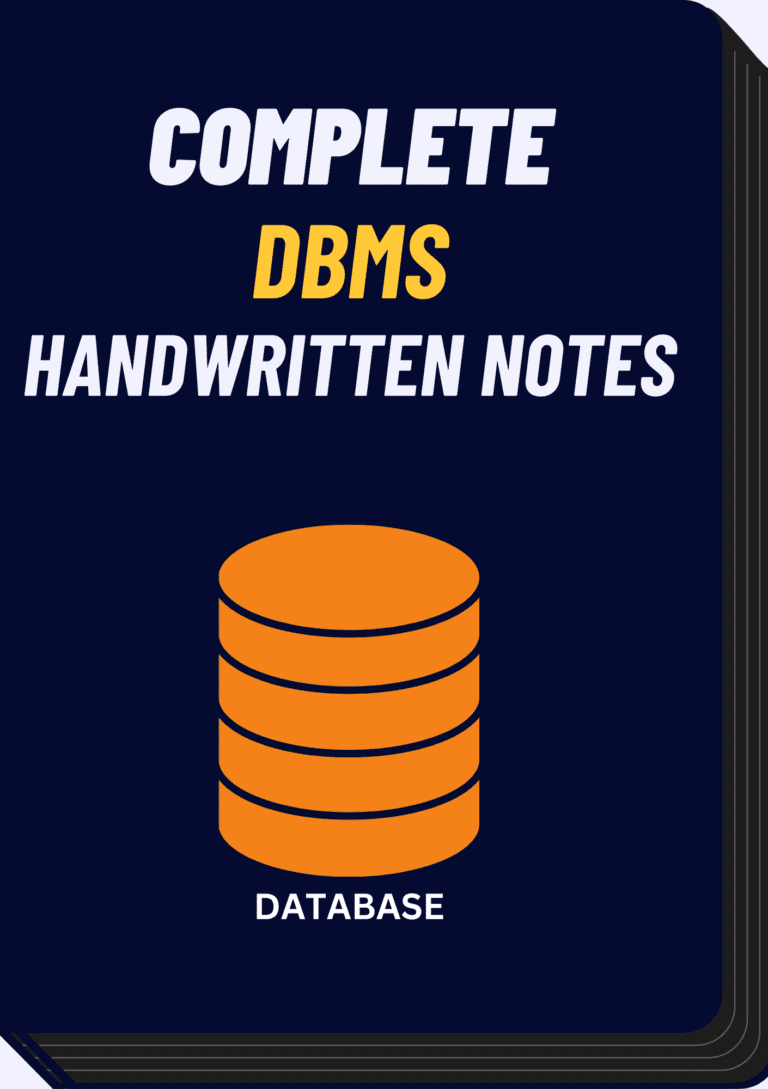












1. What is a database transaction, and why is it important in a multi-user environment?
Answer: A database transaction is a sequence of one or more SQL operations treated as a single, atomic unit of work. It is essential for maintaining data consistency in a multi-user environment by ensuring that data changes occur reliably.
2. Explain the concept of ACID properties in the context of database transactions.
Answer: ACID stands for Atomicity, Consistency, Isolation, and Durability. It describes the properties that a reliable database transaction should exhibit, ensuring that data remains consistent even in the presence of failures.
3. What is the Atomicity property in ACID, and how does it affect database transactions?
Answer: Atomicity ensures that a transaction is treated as a single, indivisible unit. It guarantees that either all changes in a transaction are applied, or none are applied in the case of a failure.
4. How does the Consistency property in ACID relate to maintaining data integrity in database transactions?
Answer: Consistency ensures that a transaction brings the database from one consistent state to another. It defines a set of rules and constraints that the data must adhere to.
5. What is the Isolation property in ACID, and why is it important for concurrent database transactions?
Answer: Isolation ensures that the execution of one transaction is isolated from others, preventing interference and maintaining data integrity during concurrent access.
6. Explain the concept of a database lock and its role in controlling concurrent transactions.
Answer: A database lock is a mechanism that restricts access to a resource (e.g., a table or a row) to ensure that only one transaction can modify it at a time, preventing conflicts in a multi-user environment.
7. What is the Durability property in ACID, and how does it guarantee that transactions are persisted even after system failures?
Answer: Durability ensures that the effects of committed transactions are permanent and survive system crashes. It involves writing transaction changes to non-volatile storage.
8. What are the common isolation levels in database systems, and how do they differ in terms of data visibility to concurrent transactions?
Answer: Common isolation levels include READ UNCOMMITTED, READ COMMITTED, REPEATABLE READ, and SERIALIZABLE. They differ in terms of the visibility of uncommitted changes to other transactions.
9. Explain the READ UNCOMMITTED isolation level and its impact on data consistency.
Answer: READ UNCOMMITTED allows transactions to read uncommitted changes by other transactions. It provides minimal isolation and may lead to dirty reads and non-repeatable reads.
10. What is the READ COMMITTED isolation level, and how does it prevent dirty reads?
Answer: READ COMMITTED ensures that transactions only see committed data. It prevents dirty reads but may still result in non-repeatable reads and phantom reads.
11. What is the REPEATABLE READ isolation level, and how does it address non-repeatable reads?
Answer: REPEATABLE READ ensures that once a transaction reads a row, it will always see the same data. It prevents non-repeatable reads but may still allow phantom reads.
12. Explain the SERIALIZABLE isolation level and its role in providing the highest level of data consistency.
Answer: SERIALIZABLE guarantees the highest level of isolation, preventing concurrent transactions from causing anomalies. It ensures that all transactions are executed as if they were serialized.
13. What is a deadlock in the context of database transactions, and how is it resolved?
Answer: A deadlock occurs when two or more transactions are waiting for resources that each holds, resulting in a standstill. Deadlocks are resolved by transaction timeout or by killing one of the conflicting transactions.
14. How does optimistic concurrency control differ from pessimistic concurrency control in handling concurrent transactions?
Answer: Pessimistic concurrency control uses locks to prevent concurrent access, while optimistic concurrency control assumes that conflicts are rare and checks for conflicts at the end of a transaction.
15. What is a savepoint in a database transaction, and how is it used to manage transaction behavior?
Answer: A savepoint is a point within a transaction to which you can later roll back. It is used to implement partial rollbacks and nested transactions within a larger transaction.
16. Explain the concept of a two-phase commit (2PC) in distributed database systems.
Answer: A two-phase commit is a protocol used to ensure that distributed transactions are either entirely committed or entirely rolled back, even in the presence of network failures.
17. What are the benefits and drawbacks of using database triggers in managing data consistency within transactions?
Answer: Triggers can automate data consistency checks and actions within transactions. However, they can also introduce complexity and potential performance overhead.
18. How does database replication affect data consistency in a distributed environment, and what strategies can be employed to maintain consistency?
Answer: Database replication can introduce challenges in maintaining data consistency. Strategies such as master-slave replication and multi-master replication can be used to address these challenges.
19. What is the role of the commit point in a database transaction, and why is it crucial for durability?
Answer: The commit point is the point in a transaction when all changes are considered permanent. It is crucial for durability because it ensures that changes are persisted and can survive system failures.
20. Explain the concept of data isolation and how it relates to maintaining data consistency in concurrent transactions.
Answer: Data isolation refers to the degree to which transactions are protected from each other’s actions. It is essential for maintaining data consistency in concurrent transactions by preventing conflicts and anomalies.
21. What is a distributed transaction, and how does it differ from a local transaction in terms of concurrency control?
Answer: A distributed transaction involves multiple databases or resources. It poses unique challenges in terms of concurrency control, including ensuring that all parts of the transaction are coordinated and consistent.
22. Explain the difference between optimistic and pessimistic concurrency control in the context of distributed databases.
Answer: In distributed databases, optimistic concurrency control checks for conflicts at the end of a transaction, assuming they are rare. Pessimistic concurrency control uses locks or other mechanisms to prevent conflicts actively.
23. What is a timestamp-based concurrency control scheme, and how does it help maintain data consistency?
Answer: A timestamp-based scheme assigns timestamps to transactions and data items. It uses timestamps to determine the order and validity of transactions, helping to maintain data consistency.
24. What is a multi-version concurrency control (MVCC) system, and how does it address concurrency challenges in databases?
Answer: MVCC allows multiple versions of a data item to coexist, ensuring that different transactions see consistent snapshots of data. It helps maintain data consistency while allowing high concurrency.
25. Explain the concept of a read-write conflict in concurrency control, and how is it resolved?
Answer: A read-write conflict occurs when one transaction reads data that another transaction is in the process of modifying. It can be resolved through locking, timestamps, or other mechanisms to prevent simultaneous access.
26. What is a phantom read in the context of concurrency control, and how is it prevented?
Answer: A phantom read occurs when a transaction reads a set of rows that match a condition, but another transaction inserts, updates, or deletes rows that also match that condition. It can be prevented through locking or appropriate isolation levels.
27. Explain the concept of a serialization anomaly, and how does it relate to maintaining data consistency in concurrent transactions?
Answer: A serialization anomaly occurs when the final state of transactions is not equivalent to their sequential execution. It is a critical issue in maintaining data consistency and can lead to data anomalies.
28. What is the role of a log file in database transactions, and how does it support durability and recovery after failures?
Answer: A log file records all changes made during a transaction. It supports durability by providing a record of changes that can be reapplied if a failure occurs, ensuring that committed transactions survive.
29. How does deadlock detection and resolution differ from deadlock prevention in database transactions?
Answer: Deadlock detection and resolution involve identifying and breaking deadlocks after they occur. Deadlock prevention aims to avoid deadlocks from happening in the first place by using locking protocols and strategies.
30. What are the benefits of using in-memory databases for managing transactions, and what challenges do they pose for data consistency?
Answer: In-memory databases offer high-speed transactions but may face challenges in maintaining data consistency, especially during system crashes.
31. Explain the concept of a distributed deadlock and how it differs from a local deadlock in concurrency control.
Answer: A distributed deadlock occurs when multiple transactions in a distributed environment are mutually waiting for resources. It differs from a local deadlock, which involves transactions waiting for resources within a single database.
32. What is the purpose of a commit or rollback statement in a database transaction, and how do they affect data consistency?
Answer: The commit statement finalizes a transaction, making its changes permanent. The rollback statement undoes a transaction’s changes. Both are crucial for maintaining data consistency by ensuring that changes are made or rolled back as intended.
33. Explain the concept of a transaction log, and how does it support data durability and recovery?
Answer: A transaction log records all changes made during transactions. It supports data durability by providing a reliable record that can be used for recovery after system failures.
34. What is a nested transaction, and how is it different from a regular transaction?
Answer: A nested transaction is a transaction within another transaction. It can be committed or rolled back independently or as part of the outer transaction.
35. How does two-phase locking contribute to data consistency in concurrent transactions, and what are its limitations?
Answer: Two-phase locking ensures that transactions acquire and release locks in a specific order, preventing data inconsistencies. However, it may lead to resource contention and potential performance issues.
36. Explain the concept of an isolation level and how it affects the visibility of data changes to concurrent transactions.
Answer: Isolation levels determine how changes made by one transaction are visible to other transactions. Higher isolation levels provide more data consistency but may reduce concurrency.
37. What are the benefits and drawbacks of using a write-ahead log (WAL) for transaction processing?
Answer: A write-ahead log (WAL) ensures that changes are logged before they are applied to the database, providing data durability. However, it can introduce additional disk I/O and potential performance overhead.
38. What is a distributed transaction coordinator, and how does it help manage distributed transactions across multiple databases?
Answer: A distributed transaction coordinator is responsible for coordinating transactions that involve multiple databases. It ensures that distributed transactions are executed correctly and consistently.
39. Explain the concept of a rolling back a transaction and when it is necessary to do so.
Answer: Rolling back a transaction involves canceling its changes and returning the database to its previous state. It is necessary when a transaction encounters an error or when it violates integrity constraints.
40. What are the potential challenges and trade-offs involved in choosing the appropriate isolation level for a database system?
Answer: Choosing the right isolation level involves balancing data consistency and performance. Higher isolation levels provide stronger consistenc.
41. What is a savepoint in a transaction, and how can it be used to manage transaction behavior?
Answer: A savepoint is a point within a transaction to which you can later roll back. It allows you to create checkpoints in a transaction and perform partial rollbacks if needed.
42. What is the role of a transaction manager in a database system, and how does it facilitate concurrency control?
Answer: A transaction manager oversees the execution and coordination of transactions. It ensures that transactions follow concurrency control rules and adhere to ACID properties.
43. Explain the concept of a distributed snapshot in the context of distributed transactions.
Answer: A distributed snapshot is a consistent view of the state of distributed data across multiple databases at a specific point in time. It is crucial for maintaining consistency in distributed transactions.
44. What is the purpose of the timestamp ordering technique in concurrency control, and how does it work?
Answer: Timestamp ordering uses timestamps to order transactions. It ensures that older transactions are completed before newer ones, helping to maintain data consistency.
45. How does database replication impact data consistency in a distributed environment, and what strategies are used to address this impact?
Answer: Database replication can introduce challenges in maintaining data consistency in a distributed environment. Strategies like eventual consistency and conflict resolution mechanisms are used to address these challenges.
46. What is a distributed commitment protocol, and how does it ensure the atomicity of distributed transactions?
Answer: A distributed commitment protocol is a set of rules and procedures that coordinate the commit or rollback of distributed transactions. It ensures that distributed transactions are either fully committed or fully rolled back to maintain atomicity.
47. Explain the concept of a distributed database lock manager, and how does it support concurrency control in a distributed environment?
Answer: A distributed database lock manager is responsible for managing locks on data distributed across multiple databases. It supports concurrency control by ensuring that transactions acquire and release locks consistently.
48. What are the potential challenges and trade-offs when using multi-version concurrency control (MVCC) in database systems?
Answer: MVCC offers high concurrency but can lead to increased storage requirements due to the multiple versions of data. It also requires efficient mechanisms for managing and cleaning up old versions.
49. What is a two-phase commit (2PC) protocol, and how does it ensure the consistency of distributed transactions?
Answer: A two-phase commit protocol is used to ensure that all parts of a distributed transaction are either fully committed or fully rolled back. It coordinates the actions of distributed participants to maintain data consistency.
50. How do long-running transactions affect data consistency and system performance, and what strategies can be employed to manage them?
Answer: Long-running transactions can introduce challenges in maintaining data consistency and may impact system performance. Strategies like distributed checkpointing and transaction splitting can be used to manage them effectively.